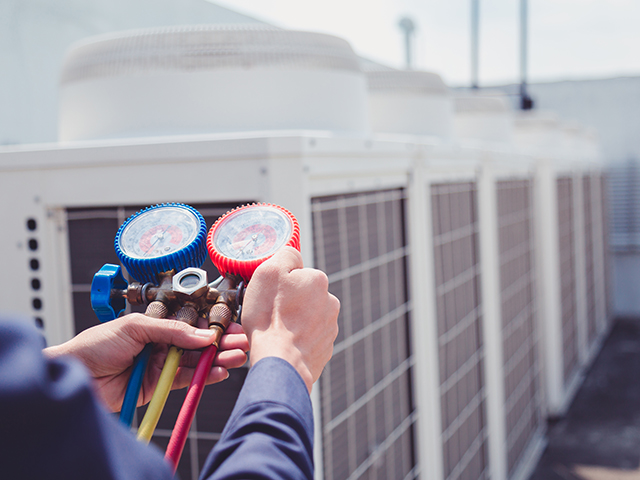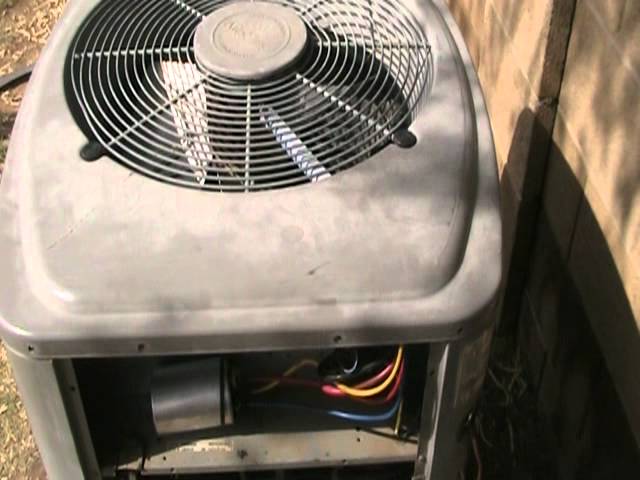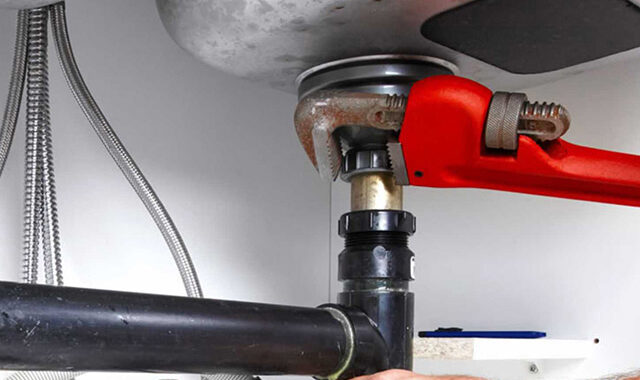Air Conditioning Repairs You Should Know About

Air conditioning is no longer a luxury but a necessity in many homes and workplaces. It provides a cool respite during hot summer months and ensures comfort indoors, regardless of the weather outside. However, like any piece of machinery, air conditioners require maintenance and occasional repairs. Understanding the common issues that air conditioners face can help you take better care of your unit, minimize downtime, and save on costly repairs. In this blog post, we’ll explore the most common air conditioning repairs you should be aware of, and provide insights on how to prevent them.
1. Refrigerant Leaks
Refrigerant is the fluid that helps cool the air in your air conditioning system. If your AC unit is low on refrigerant, it won’t be able to cool the air efficiently. The most common cause of low refrigerant is a leak in the system. Over time, wear and tear on the unit, or even poor installation, can cause the refrigerant lines to crack or loosen, allowing the refrigerant to escape. If you’re experiencing such issues, it’s best to contact a professional like River Valley Aircon Servicing to diagnose and repair the leak, ensuring your AC unit runs at its optimal efficiency.
Signs of a refrigerant leak include:
- The AC is blowing warm air instead of cool air.
- The air conditioner runs longer than usual without cooling effectively.
- There’s an ice buildup on the evaporator coils.
Repair Solution:
Fixing a refrigerant leak typically requires a professional HVAC technician. They will need to find and repair the leak before refilling the refrigerant to the correct level. It’s crucial to address refrigerant leaks quickly because running an AC with low refrigerant can lead to compressor damage.
2. Dirty or Clogged Air Filters
Air filters are essential for keeping the air in your home clean and for ensuring the air conditioner works efficiently. When the air filters are clogged with dust, dirt, and debris, the airflow through the system is restricted. This can cause the air conditioner to work harder than necessary, leading to overheating, reduced efficiency, and ultimately, system failure.
Signs of dirty air filters include:
- Reduced airflow from vents.
- The AC system cycles on and off frequently.
- Unpleasant odors or poor air quality.
Repair Solution:
Cleaning or replacing the air filters is a simple and inexpensive fix. It’s important to replace or clean the filters regularly—at least every 1-3 months, depending on usage. This will improve air quality and extend the lifespan of your air conditioning system.
3. Frozen Coils
Frozen evaporator coils are a common problem in air conditioning systems. These coils are responsible for absorbing heat from the air. However, if there is insufficient airflow due to dirty air filters, low refrigerant levels, or malfunctioning fans, the coils can freeze. When this happens, the AC unit cannot cool the air effectively, and the system may overheat.
Signs of frozen coils include:
- Ice forming on the evaporator coils (usually visible through the air vents).
- The AC blows warm air.
- The system starts emitting strange sounds.
Repair Solution:
A frozen coil is usually a sign that something is obstructing airflow or that there’s an issue with the refrigerant. The first step is to turn off the air conditioner to allow the ice to melt. Afterward, check the filters and vents for blockages. If the issue persists, it’s best to call an HVAC technician to inspect the refrigerant level and other components of the system.
4. Thermostat Issues
The thermostat controls the temperature of your home by communicating with the air conditioning unit. If the thermostat is malfunctioning, it may cause the AC to run continuously or fail to turn on at all. Inaccurate temperature readings can also lead to improper cooling and increased energy consumption.
Signs of thermostat issues include:
- The thermostat reading doesn’t match the room temperature.
- The AC runs constantly or cycles on and off too frequently.
- The system doesn’t respond to thermostat settings.
Repair Solution:
In some cases, the thermostat may just need new batteries or recalibration. If the problem persists, the thermostat may need to be replaced. A professional technician can test the thermostat’s accuracy and make necessary adjustments or replacements.
5. Compressor Problems
The compressor is the heart of the air conditioning system, as it helps circulate refrigerant through the unit. If the compressor fails, your air conditioner won’t be able to cool the air effectively. Compressor problems can occur due to electrical issues, overheating, or a lack of proper maintenance.
Signs of compressor issues include:
- The AC unit turns on but doesn’t cool the air.
- There is a loud, unusual noise coming from the unit.
- The compressor won’t start at all.
Repair Solution:
If your compressor is malfunctioning, it often requires a professional technician to diagnose and repair the issue. In some cases, the compressor may need to be replaced entirely, which can be a costly repair. Regular maintenance, including cleaning the coils and checking refrigerant levels, can help prevent compressor failure.

6. Clogged Drain Line
The air conditioner produces condensation as it cools the air. This moisture is typically drained through a condensate drain line. However, if this drain line becomes clogged with dirt, algae, or mold, water can back up into the unit, leading to leaks and water damage.
Signs of a clogged drain line include:
- Water pooling around the air conditioner or in the drain pan.
- The AC unit produces an unpleasant smell.
- The system shuts off unexpectedly due to a safety mechanism.
Repair Solution:
Cleaning the condensate drain line is a relatively easy fix. It involves using a wet/dry vacuum to clear any clogs. Regularly cleaning the line and checking for blockages can help prevent water damage and maintain the efficiency of your AC.
7. Faulty Ductwork
Leaky or damaged ductwork can significantly reduce the efficiency of your air conditioning system. If the ducts are poorly insulated, have gaps, or are obstructed, cool air may escape before it reaches its destination. This results in uneven cooling and higher energy bills.
Signs of faulty ductwork include:
- Hot or cold spots in different areas of your home.
- Unusually high energy bills.
- Weak airflow from vents.
Repair Solution:
Ductwork issues often require professional attention. Technicians can inspect the ducts, seal any leaks, and ensure the system is properly insulated. In some cases, duct replacement may be necessary to improve efficiency.
8. Fan Problems
The fan in your air conditioning unit helps circulate cool air throughout your home. If the fan is malfunctioning, the unit may not blow air at the right temperature or volume. A faulty fan motor, worn-out bearings, or debris clogging the fan blades are common causes of fan problems.
Signs of fan problems include:
- No airflow from the AC unit.
- Strange noises coming from the fan.
- The AC runs, but air isn’t being distributed evenly.
Repair Solution:
A technician can inspect and repair or replace the fan motor if necessary. Regular maintenance, such as cleaning the fan blades and lubricating the motor, can help prevent fan failure.
Conclusion
Air conditioning repairs are a common part of owning an AC system, but with regular maintenance and prompt attention to any signs of trouble, you can avoid costly breakdowns and extend the lifespan of your unit. Whether it’s a refrigerant leak, clogged filter, or a more complex issue like a compressor failure, addressing these problems early can save you time, money, and discomfort. Always consult a professional HVAC technician for issues beyond simple fixes, as they have the expertise to diagnose and repair your AC system properly.


 SEO for E-Commerce Platforms
SEO for E-Commerce Platforms  Sea Moss into Your Daily Meals
Sea Moss into Your Daily Meals  Data Storage for Personalized Medicine
Data Storage for Personalized Medicine  Tips for Maintaining Your Plumbing System
Tips for Maintaining Your Plumbing System  CBD in Managing Arthritis Symptoms
CBD in Managing Arthritis Symptoms  Understanding Distributed Computing
Understanding Distributed Computing  Air Conditioning Repairs You Should Know About
Air Conditioning Repairs You Should Know About